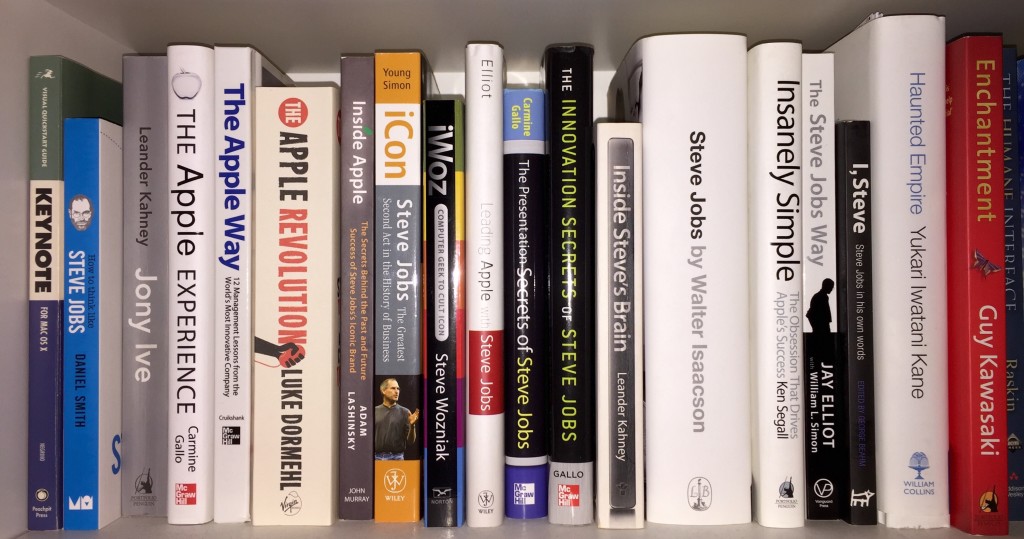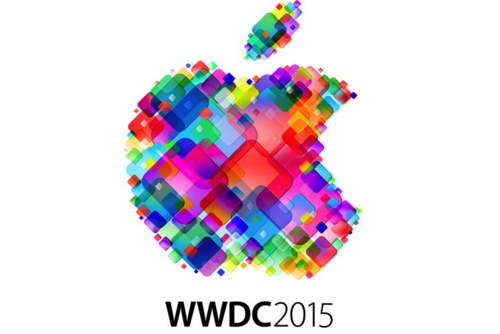With WWDC 2015 having transpired just this last week, and given my pre-event thoughts and hopes for the event, the following is my post-event review of the Keynote presentation and the direction(s) of Apple. This article also builds on my two Apple-related articles on the Apple Watch: Apple in 2015 and Apple Watch Product Review.
Expectations of Apple
Since the mainstream popularity and adoption of the iPod, iPhone and iPad products, Apple has found itself increasingly in the media spotlight, whether the company wanted or liked it or not. The runaway and subsequent success of each of these three product lines since 2002 has had the effect of creating ever-increasing market expectations of the company – rightly or wrongly.
Now, every company listed on Wall Street has a standard set of expectations applied to them by financial analysts – profitability and return on investment / earnings per share just to name three key metrics.
In order to best understand a company like Apple, it is worth doing in-depth research. Now, whilst I cannot claim to be a financial analyst, or an expert authority on the company, I can attest to having researched and read quite a few books on Apple. Just how many? Well since a picture speaks 1000 words – this is my current library on Apple-related books:
 There is a total of 19 books in this list, which also excludes other books that look at Disney and more recently RIM/Blackberry (Losing the Signal). Does this picture also give you a hint of how I plan to map out future articles on the weekend topic of Apple?
There is a total of 19 books in this list, which also excludes other books that look at Disney and more recently RIM/Blackberry (Losing the Signal). Does this picture also give you a hint of how I plan to map out future articles on the weekend topic of Apple?
Having read all the titles visible in the above picture, I think it is safe to say that I have a fairly good understanding of where Apple has come from and how they have approached the 2000s. One key theme and impression of Apple is that it is a common misunderstanding on Apple’s relationship to innovation. Just this morning, I had a discussion on this very subject – that Apple is supposed to be an innovative company and that WWDC demonstrates that they are losing the focus on innovation.
Apple is NOT as innovative as you think. Apple is not a first mover when it comes to new technologies. If you think carefully about each of the product lines, Apple has rarely been the first mover to introduce a new technology. Take the iPod – Creative and Sony were top-rated mobile music playing devices prior to the introduction of iTunes and the iPod. When Steve Jobs did unveil the iPod as fitting “1000 songs in your pocket”, the iPod simply perfected the delivery and presentation of the same functionality. Apple’s innovation was in delivering a combination of design form with high usability. As part of realising the vision of an iPod, Apple even acquired various companies to ensure that their vision could be realised. The iPhone was also not the first smart phone to grace the market – technically Research in Motion / RIM / Blackberry and Palm had released smart phone devices. What the iPhone did was to introduce a unique and compelling combination of features for the mass consumer market. In both the iPod and iPhone, it took several iterations and subsequent releases to improve the product sufficiently for the mainstream to adopt the devices.
For the iPod (and iTunes as the supporting ecosystem software), it was not until Apple released the PC version of iTunes that adoption rates significantly increased. The parallel example for the iPhone would be the release of the App Store in the iPhone 3G in June 2008, a whole year after the initial iPhone product was first released. By that time, the one-year-old product already had developers and the hard-core Apple fans onboard.
The iPad as a product extension of the iPhone and iOS ecosystem was able to leverage the success and wide availability of iOS apps to become immediately successful. It was around this time that the mainstream media interests probably were starting to build and create their own expectations on Apple, if not slightly beforehand. The Apple Watch is still in its first quarter of sales so cannot be commented on as a product for this kind of analysis, other than to affirm the trend that it was not the first smart watch product released; numerous brands like Pebble, Samsung and Sony have been out since late 2014.
WWDC Announcements
Across the board, given the numerous media leaks in the lead up, most of what was announced at the Keynote was known at a high level. iOS 9.0 was inconspicuous in avoiding all reference to the next iteration of the iPhone 6S model. The announcement of the impending release of Apple Pay to the UK is a welcome new story for mobile payments, but personally I am still waiting for an Australian berthing. Independent of WWDC, I recently read that the Commonwealth Bank of Australia (CBA) is in the final stages of testing for a near-future launch.
The next version of OS X – 10.11 / El Capitan was reasonably predicted. The name choice was always fairly mysterious and I only object to it on the grounds that the double word naming makes for a clumsy marketing effort. I suspect over time, the product version may be simplified for convenience to Capitan… My name guess of OX X Mojave was way off… Just to be consistent with what I did in my pre-event WWDC write-up, here is the same map to help us non-Californians appreciate where within Yosemite National Park is El Capitan:
 The announcement of Apple Music with the pricing of $9.99 USD per month was fairly unsurprising. The 24 hour x 7 days radio station Beats 1 was quite interesting given that it will be in the details on launch that reveal just how Apple is growing their Music/Media aspirations. We can only speculate as to how much had to be recalibrated because of the inability of Apple to secure the desired content deals for video content and the Apple TV. One super critical point was made that a future update later this year would enable Apple Music to work on Apple TVs AND Android phones. This approach should ring familiar with what I articulated about iTunes and iPods a decade ago. No doubt, Apple is taking the music streaming market seriously.
The announcement of Apple Music with the pricing of $9.99 USD per month was fairly unsurprising. The 24 hour x 7 days radio station Beats 1 was quite interesting given that it will be in the details on launch that reveal just how Apple is growing their Music/Media aspirations. We can only speculate as to how much had to be recalibrated because of the inability of Apple to secure the desired content deals for video content and the Apple TV. One super critical point was made that a future update later this year would enable Apple Music to work on Apple TVs AND Android phones. This approach should ring familiar with what I articulated about iTunes and iPods a decade ago. No doubt, Apple is taking the music streaming market seriously.
Looking to the Future
One not-so-obvious update that has the potential to be big-impact is the on-device searching capabilities that the iOS updates introduce to all Apple iPhones/iPads. This change is significant because it continues Apple’s efforts to slowly shift the balance of power away from Google when it comes to the Google core business of search. Coupled with Tim Cook’s indirect hit at the Silicon Valley companies that approach privacy differently to Apple, the subtle message to Google is that Apple is starting to ramp up their game. Part of this future battle with Google is also tied up in the speech recognition software – currently fought out as Siri versus Cortana, the Google equivalent. iOS 9.0 will launch the next evolution to Siri – Proactivity. Proactivity is designed to learn all about the user and will offer suggestions based on where you are, who might be ringing you, connects to apps and more.
Another detail within the iOS ecosystem is the replacement of Newsstand with News. In this redevelopment, Apple looks to take on competitors like Flipboard. News is focused not just at the content reader audience, but simplifies the publication complexities by taking a single input feed and then outputting all the necessary formats supported by the different form-factors of iPhones, iPads and iPad Minis.
A third iOS app called Move to iOS is just another new weapon that Apple is releasing to combat Google/Android. Targeted at making the Android to iOS transition a seamless experience, this kind of fine-print announcement allows Android users to wirelessly transfer contacts, message history, camera photos, videos, web bookmarks, email accounts and DRM-free media over to their new iOS device. Watch out Google! Another swipe at Google and the open-source nature of Android is the announcement that the developer ecosystem that is now based around Swift will become open source. For the first time, Apple is opening their doors to this kind of market.
A wireless CarPlay ecosystem offers even more simplicity for drivers and the use case of iOS integration into supporting vehicles. On the HealthKit front, new capabilities in the API kit suggest even greater and detailed health metrics. Along with the announcement of products with HomeKit integration, Apple’s software aspirations are truly remarkable. The sheer number of different fronts that are being formed by everything announced at WWDC 2015 will continue to put the pressure on all kinds of companies.
Historically, given the splash that the iPhone had on the marketplace, that product alone distracted the likes of Sony, Nokia and then-named Research in Motion (BlackBerry) to the extent that they all attempted to follow Apple only to pay heavily for being wrong-footed. All three smart phone companies were in a relative position of dominance in 2006, but now almost a decade later, all three companies represent a small market share and struggle to remain competitive against the likes of Samsung and Apple.
Conclusion
Overall, WWDC was a controlled affair by Apple. Their conservative nature is all the more prevalent in the more focused increments of innovation. However, it should be noted that Apple, with its vast portfolio, is ever-increasing the wide berth that its product line offers. Apple is a position of relative strength, having been on the receiving end of various favourable continuous and virtuous cycles. The billion-dollar investments made a decade ago into precision robotics manufacturing are now truly starting to pay themselves off via the highest quality of product ever developed by Apple. WWDC, in focusing on the software half of the product design roadmap, demonstrates how Apple is well aware of the dangers lurking and how they continue to apply pressure on their competitors.
I suspect another event will focus on hardware announcements in July/August. After all, the iPhone 6S will need a PR campaign to support the typical September/October product launch. During this future event, Apple should address the Apple TV future capabilities, along with any major announcement on the Apple Watch hardware.


You must be logged in to post a comment.